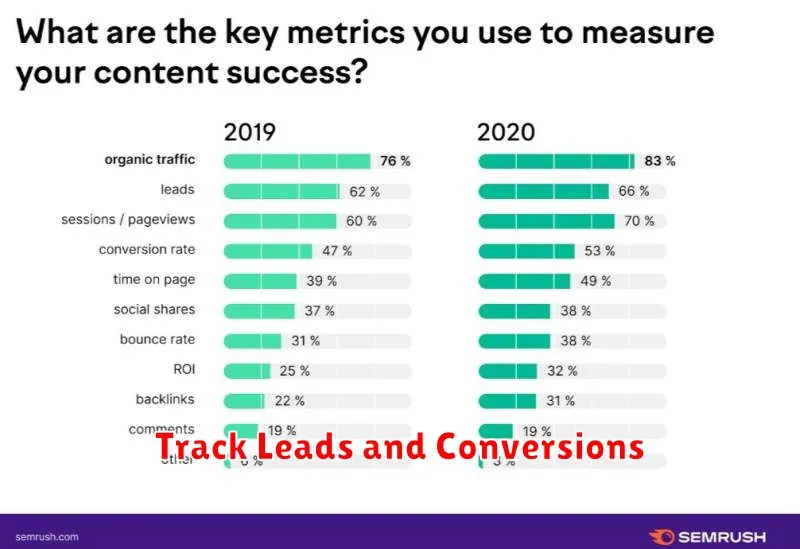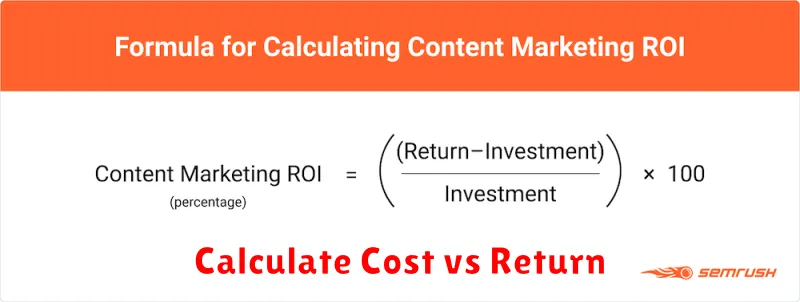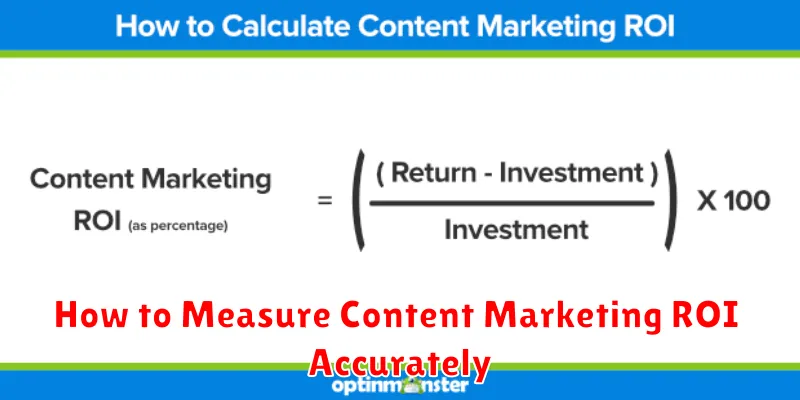Measuring the return on investment (ROI) of your content marketing efforts can be challenging. Many marketers struggle to connect the dots between engaging content and actual business outcomes. However, accurately measuring content marketing ROI is crucial for demonstrating its value, securing further investment, and optimizing your strategy for maximum impact. This article will provide a practical guide to effectively measuring your content marketing ROI, enabling you to demonstrate the value of your content and make data-driven decisions to improve future campaigns. We’ll cover key metrics, tools, and techniques that will help you track, analyze, and report on your content’s performance with precision.
Stop guessing the effectiveness of your content marketing. Learn how to precisely calculate your content marketing ROI using proven methodologies and practical tips. We’ll demystify the process and equip you with the knowledge to justify your content budget, prove its worth to stakeholders, and refine your strategy for optimal results. This article will explore how to connect content to concrete business outcomes, such as lead generation, sales, and brand awareness, offering actionable insights to improve your content marketing measurement process. From setting clear goals to selecting the right key performance indicators (KPIs), we’ll guide you through every step to effectively measure content marketing ROI and demonstrate the tangible impact of your content.
Why Measuring ROI Is Challenging
Measuring the return on investment (ROI) of content marketing can be a complex undertaking. Unlike direct response marketing, where attribution is often straightforward, content marketing operates on a longer timeline and involves multiple touchpoints across the customer journey.
One key challenge lies in accurately attributing revenue to specific content pieces. Customers may interact with various pieces of content before making a purchase, making it difficult to isolate the impact of a single blog post, video, or social media update.
Another significant hurdle is the intangible nature of some content marketing benefits. While leads and sales are quantifiable, brand awareness, customer engagement, and thought leadership are harder to measure with precision, despite their crucial role in long-term growth.
Furthermore, the ever-evolving digital landscape adds to the complexity. Changes in algorithms, platform updates, and shifting audience behavior require constant adaptation in measurement strategies.
Define Clear Business Goals
Before assessing the ROI of your content marketing efforts, clearly define your business objectives. What are you hoping to achieve with your content? Is it brand awareness, lead generation, sales conversions, or something else? Without specific, measurable, achievable, relevant, and time-bound (SMART) goals, calculating ROI becomes an arbitrary exercise.
Examples of measurable business goals include:
- Increase website traffic by 20% in Q3.
- Generate 50 qualified leads per month through content downloads.
- Improve conversion rates from free trial sign-ups to paid subscriptions by 5%.
By establishing clear goals upfront, you can tailor your content strategy and accurately measure its impact on your bottom line. This allows you to demonstrate the value of your content marketing investment and make data-driven decisions for future campaigns.
Track Leads and Conversions

Tracking leads and conversions is crucial for measuring content marketing ROI. It connects your content efforts directly to tangible business outcomes. You need to establish clear methods for attributing leads and conversions back to specific content pieces.
Several methods exist for tracking this connection. Using unique landing pages for different campaigns allows you to easily track conversions originating from specific content. CRM systems can be invaluable tools for managing and analyzing lead information, providing insight into which content pieces are most effective in driving conversions.
Implementing UTM parameters in your content URLs allows for detailed tracking in analytics platforms. This granular data helps pinpoint high-performing content and identify areas for improvement.
Use Attribution Models Correctly
Accurately measuring content marketing ROI relies heavily on understanding and applying the right attribution model. Attribution models assign credit for conversions to different touchpoints in the customer journey. Choosing the wrong model can lead to skewed results and misinformed decisions.
Several common models exist, each with its own strengths and weaknesses. Last-click attribution, while simple, often overlooks valuable content higher up in the funnel. First-click attribution, conversely, overemphasizes initial touchpoints. More nuanced models, such as linear, time decay, and position-based, distribute credit across multiple touchpoints, providing a more holistic view.
The data-driven attribution model offers the most sophisticated approach. This model uses statistical analysis to determine the actual contribution of each touchpoint. While complex, it offers the greatest potential for accuracy.
Selecting the correct model depends on your business and marketing objectives. Consider your typical customer journey and the role your content plays at each stage.
Monitor Engagement Metrics
Monitoring engagement metrics is crucial for understanding how your audience interacts with your content. These metrics provide valuable insights into which content resonates, what keeps your audience interested, and what needs improvement.
Key engagement metrics to track include:
- Time on Page/Session Duration: Indicates how long visitors spend consuming your content, suggesting the level of interest and value they find.
- Bounce Rate: The percentage of visitors who leave your site after viewing only one page. A high bounce rate might indicate irrelevant content or poor user experience.
- Social Shares: The number of times your content is shared on social media platforms, reflecting its reach and potential virality.
- Comments: The number of comments received on your content reveals the level of interaction and discussion it generates.
- Click-Through Rate (CTR): For content with calls-to-action, CTR indicates how effective your content is at driving conversions.
By closely monitoring these metrics, you can identify top-performing content, understand audience preferences, and optimize your content strategy for better ROI.
Calculate Cost vs Return

This stage involves comparing the total cost of your content marketing efforts against the return generated. Accurately calculating both figures is crucial for a meaningful ROI.
Calculating Costs: Factor in all expenses associated with content creation, distribution, and promotion. This includes:
- Content creation (writers, designers, videographers)
- Software and tools (SEO tools, analytics platforms)
- Paid promotion (social media ads, sponsored content)
- Team salaries (content managers, strategists)
Calculating Return: Quantify the benefits derived from your content marketing. This might involve measuring:
- Leads generated: Track how many leads came directly from your content.
- Sales conversions: Determine how many leads converted into paying customers.
- Website traffic increase: Monitor the growth in website visitors attributed to your content.
- Brand awareness/reach: Assess the impact of your content on brand visibility and audience engagement.
Once you have both cost and return figures, you can calculate your ROI. A simple formula is: ((Return – Cost) / Cost) * 100.
Tools for Measuring ROI Effectively
Accurately measuring content marketing ROI requires leveraging the right tools. Several platforms and software solutions can assist in this process, offering varying levels of functionality and reporting.
Analytics Platforms are crucial for tracking website traffic, engagement metrics, and conversions. These platforms provide insights into how users interact with your content and what actions they take afterward. Popular options include Google Analytics and Adobe Analytics.
CRM Systems (Customer Relationship Management) connect marketing efforts with sales outcomes. By tracking leads generated through content, you can identify which pieces contribute most effectively to the sales pipeline. Salesforce and HubSpot are examples of popular CRM systems.
Marketing Automation Platforms can streamline content distribution, track campaign performance, and measure ROI. These platforms often integrate with analytics and CRM systems to offer a comprehensive view of marketing effectiveness. Examples include Marketo and Pardot.
Choosing the right tools depends on your specific needs and budget. Consider factors like data integration capabilities, reporting features, and ease of use when making your selection.

